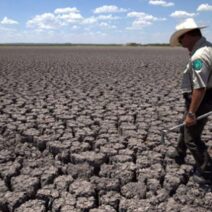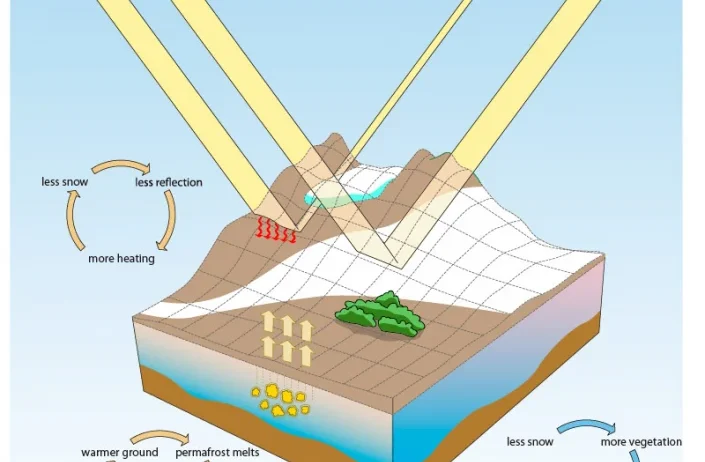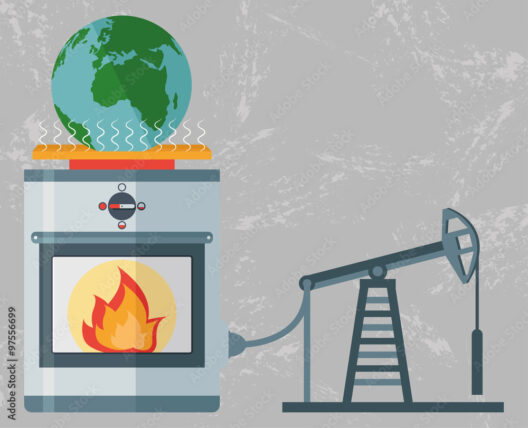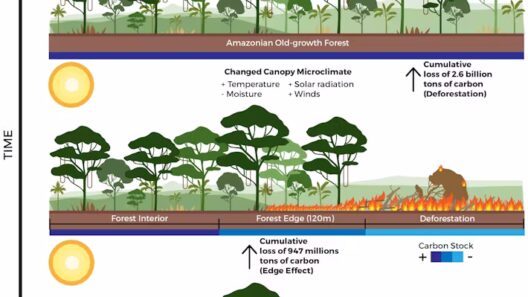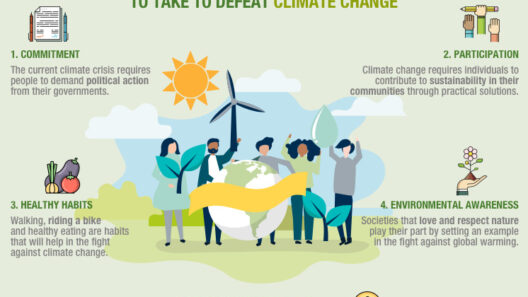The albedo effect is a fundamental concept in understanding Earth’s climate and its changes, providing insights into the interplay between the planet’s surface and the atmosphere. Albedo refers to the measure of reflectivity of a surface, quantifying how much sunlight is reflected back into space, as opposed to being absorbed. This intriguing phenomenon can significantly influence global temperatures, climatic systems, and even weather patterns.
At its core, the albedo effect establishes a delicate balance within the Earth’s energy budget. Different materials on the Earth’s surface have varying albedo values. For instance, ice and snow boast a high albedo, reflecting approximately 80% to 90% of incoming solar radiation. In contrast, darker surfaces such as forests or oceans have low albedo values, absorbing a substantial amount of sunlight. This distinctive disparity leads to contrasting climate interactions and responses to solar energy input.
One of the most pressing concerns in contemporary climate science revolves around the loss of reflective surfaces due to anthropogenic influences such as global warming. As temperatures rise, ice caps and glaciers experience accelerated melting. This reduction of reflective ice exposes darker ocean or land underneath, which possess low albedo. Consequently, as these darker surfaces absorb more solar radiation, the Earth’s temperature escalates, creating a feedback loop that perpetuates further warming. This vicious cycle is one of the cornerstones of climate change dynamics.
To fully grasp the importance of albedo in climate regulation, one must delve into the concept of feedback mechanisms. Feedback loops can be positive or negative. In the case of albedo, the feedback is predominantly positive. Higher temperatures lead to reduced ice cover, which enhances heat absorption and consequently drives up temperatures even further. This phenomenon can potentially lead to abrupt climate shifts if left unchecked; a situation often referred to as tipping points in the scientific community. Understanding these tipping points can inform policies aimed at mitigating climate impacts.
The albedo effect not only influences temperature on a global scale but also plays a pivotal role in local and regional climates. For instance, urban areas often exhibit urban heat islands—regions that experience significantly higher temperatures than their rural counterparts due to altered albedo effects. Pavement surfaces and buildings typically have low reflectivity, absorbing heat during daylight and releasing it slowly at night. This urban phenomenon can exacerbate energy demands, air quality issues, and human health risks during heatwaves.
Furthermore, forests and grasslands contribute uniquely to the albedo effect. While a lush green forest may have a relatively low albedo, its capacity for evapotranspiration helps cool the air, thus moderating local temperatures and stabilizing hydrological cycles. Conversely, deforestation disrupts this delicate balance by increasing albedo and reducing cooling effects, effectively altering local climates and leading to increased vulnerabilities to extreme weather events.
The complexity of albedo’s impact on climate is also illuminated through its relationship with clouds. Clouds themselves possess varying albedo effects depending on their type and altitude. Low, thick clouds tend to have higher albedo than high, wispy clouds, which can trap heat. This creates a layer of complexity in predicting climate outcomes; understanding cloud dynamics is crucial for accurate climate modeling. Misestimating these effects can lead to significant disparities in climate predictions.
In the context of addressing climate change, acknowledging the role of albedo provides an avenue for innovative solutions. Strategies such as enhancing reflective surfaces through urban planning—such as constructing green roofs, implementing lighter-colored pavements, or planting more trees—can effectively modify albedo values. These interventions not only contribute to lowering local temperatures but can also aid in reducing the overall carbon footprint of urban areas. This shift in perspective towards sustainable urban development can yield promising results in combating climate change.
Another dimension to consider is the global implications of changes in land use and land cover on albedo effects. Agriculture, for example, plays a crucial role. The conversion of natural landscapes to cropland typically increases albedo, impacting local climate systems. However, certain farming practices, such as soil conservation techniques and agroforestry, can mitigate these effects by fostering soil health and promoting biodiversity. This holistic approach to land management underscores the interconnectedness of our ecosystems and the necessity for collaborative efforts in conserving nature.
As technological advancements progress, scientists are increasingly exploring geoengineering possibilities aimed at modifying Earth’s albedo intentionally. Concepts like solar radiation management propose reflecting more sunlight back into space to ameliorate warming effects. However, these techniques raise ethical and ecological questions; the long-term implications on ecosystems and global climates require thorough examination. Thus, any such interventions must be approached with caution and diligence.
In the grand tapestry of Earth’s climate system, the albedo effect emerges as a vital thread—an intricate interplay of reflectivity, warming, and feedback loops that deserves serious consideration. As we confront the existential challenges posed by climate change, re-evaluating our understanding of albedo could pave the way for innovative solutions. Emphasizing sustainable practices, harnessing technology responsibly, and fostering regional cooperation can cultivate a climate-resilient future. The complexities surrounding albedo remind us that, while the challenge is formidable, our collective response can be equally dynamic and transformative.
